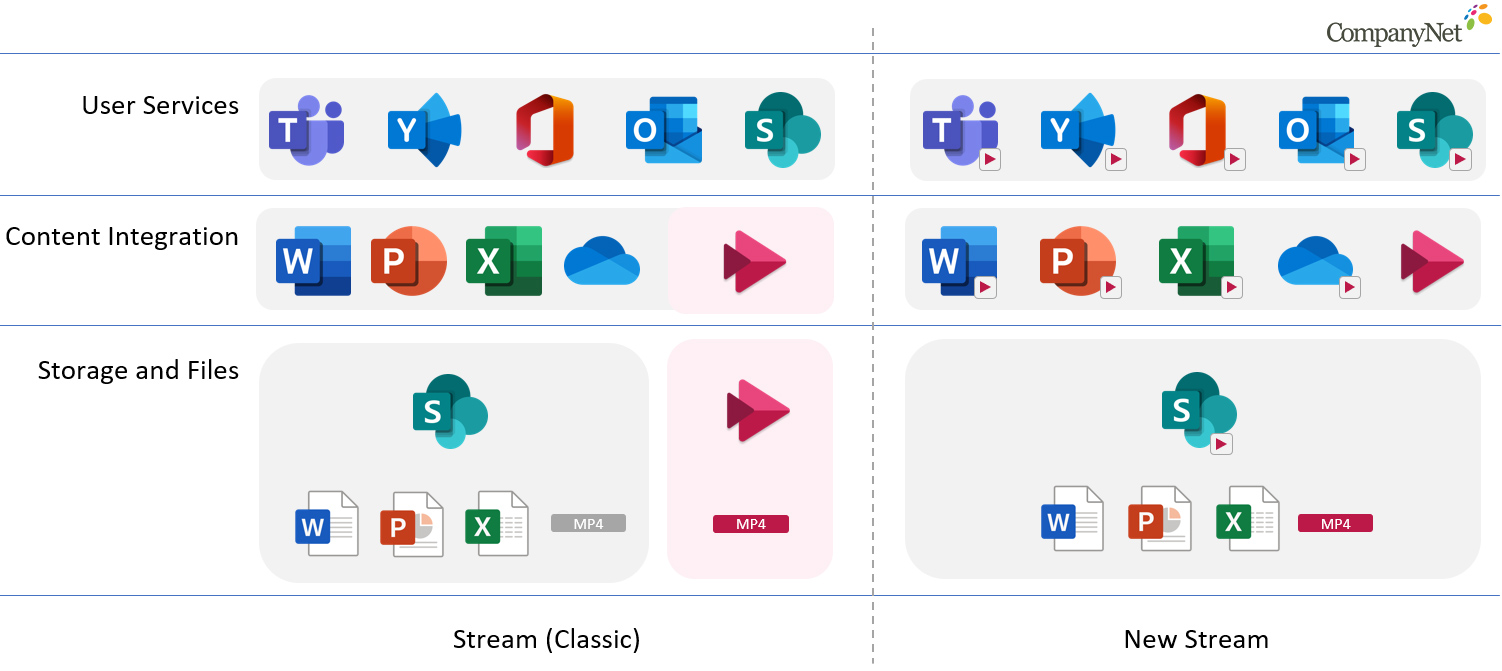
Microsoft Stream was launched just over three years ago as the service to replace Office 365 Video, providing corporate video streaming and sharing video capabilities.
In October 2020, Microsoft announced that Stream would be much better integrated with Microsoft 365 to provide ‘fast, intelligent video’ capabilities for all users. So, what does this mean in practice?
Classic Stream vs New Stream
In terms of terminology there is now ‘Classic’ Stream, which is what every customer has now. New Stream is the future service and there will be a transition period where customers are switched from Classic to New.
Although the user impact of New Stream may not be enormous, it is a large technical change from Microsoft’s point of view with a complete rebuilding of the Stream video service in aggressive timelines.
From a Microsoft 365 administration point of view, the primary change is that New Stream will use OneDrive or SharePoint to store videos (as an MP4 file) rather than the separate Stream service. A Stream video will therefore be treated in the same way as any other file being stored in SharePoint/OneDrive.

SharePoint will be used where a meeting recording is within a Microsoft 365 Group / Teams channel. Where the recording is not linked to a group, the organisers OneDrive will be used.
The use of SharePoint / OneDrive means that sharing and permissions management are consistent across the services (which was not the case with Classic Stream). It also allows Microsoft 365 Security and Compliance features such as classification or retention (deletion) policies to be leveraged fully in addition to Microsoft Search and Microsoft Graph integration.
The storage used will also switch from the Stream service (which was a separate service quota), to use the organisational SharePoint or user OneDrive allocation. This enables larger volumes to be stored, but also has the potential to impact storage allocations if an organisation is already using their SharePoint widely.
There is no word from Microsoft if SharePoint or OneDrive storage allocations will update with this change.
The roadmap includes improved capabilities with the New Stream such as branded video portals and customised video integration with intranets.
Why is it happening?
The change to remote working within organisations and increased requirements for capabilities such as meeting recordings and remote learning have led to the limitations of Stream (Classic) being highlighted.
Storage allocation is a primary factor, with Microsoft Stream (Classic) only allocating 500GB per tenant plus 0.5GB per licensed user which will quickly be used up if an organisation leverages video heavily.
Microsoft have introduced the new Stream to address this, initially as a more scalable platform with the same features, but with new capabilities being rolled out shortly afterwards.
When is it happening?
The migration dates are aggressive, with the current roadmap timings as follows:
There is not yet feature parity between the two services, so it this may influence an organisations decision on whether to opt-out of new Stream initially. The primary focus is on meeting recordings and the roadmap dates above relate to this.
For existing content in Stream, this will also need to be migrated. Microsoft have not confirmed all the details, but the approach is summarised as ‘on of flexibility and putting the Stream admin in control of the migration’.
There is no date of when Stream (Classic) will be retired.
What do I need to do?
If your organisation has not made use of Stream to date, then very little action is required apart from familiarising yourself with the key dates and feature roadmap.
The situation is more complex for organisations who are currently using Stream for corporate video and meeting recordings, and they should initially decide whether to opt-in to New Stream or opt-out and stay in classic Stream.
They should also review the potential impact to SharePoint/OneDrive storage allocations within the tenant and adjust policy / user guidance as a result.
